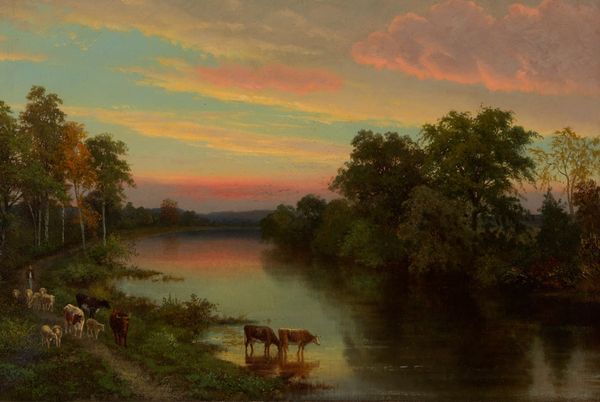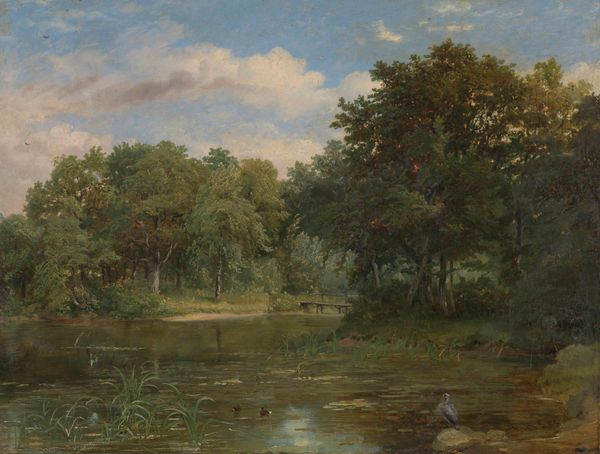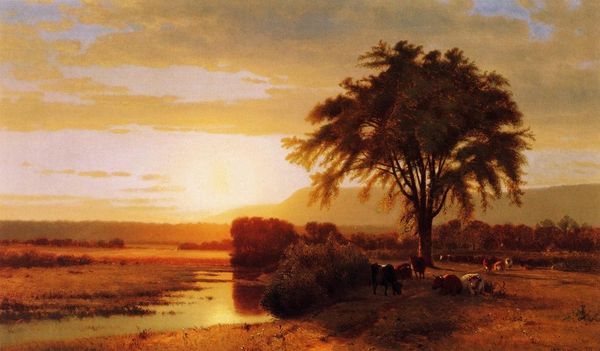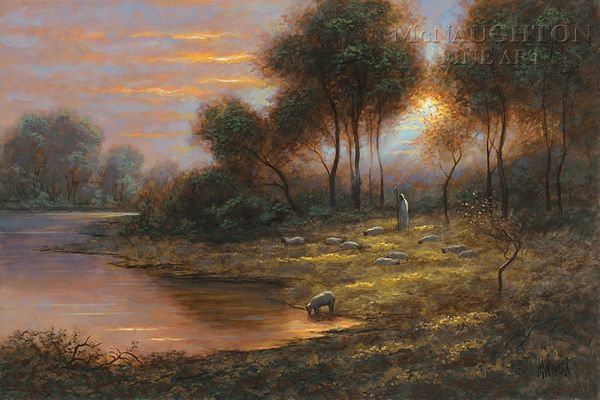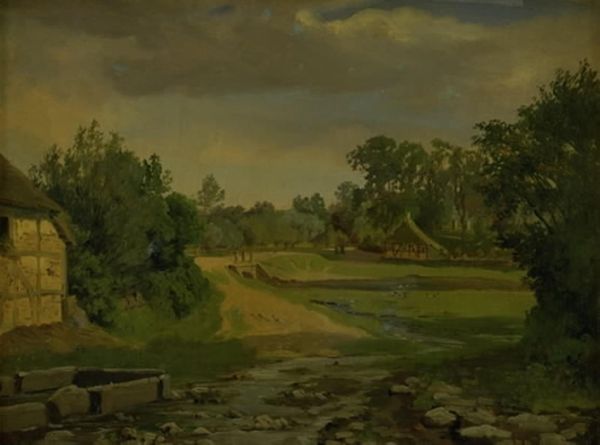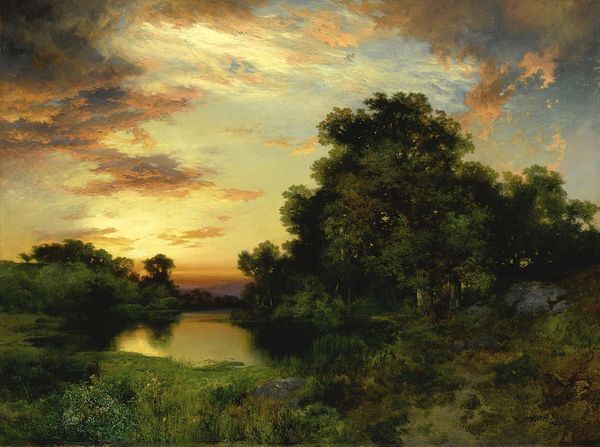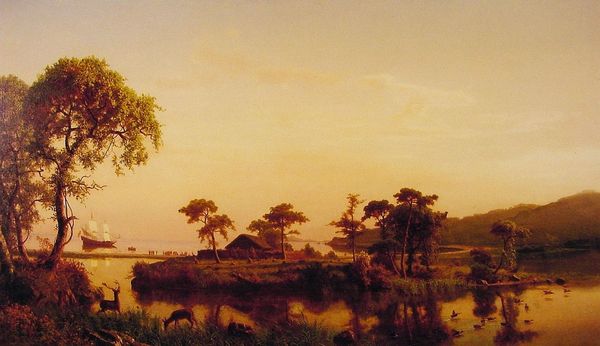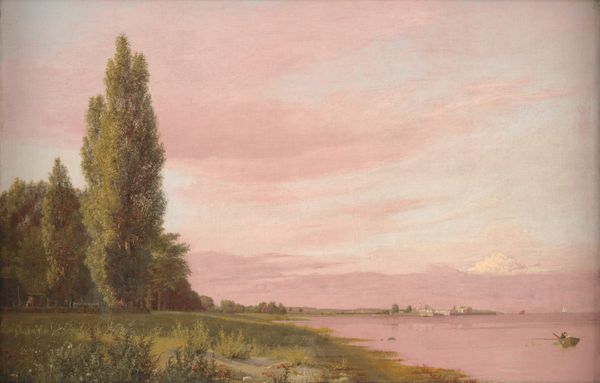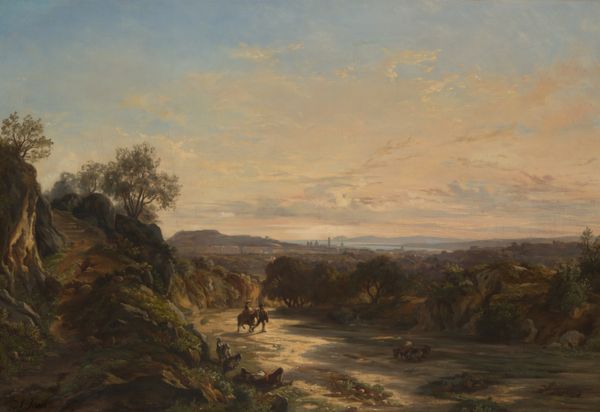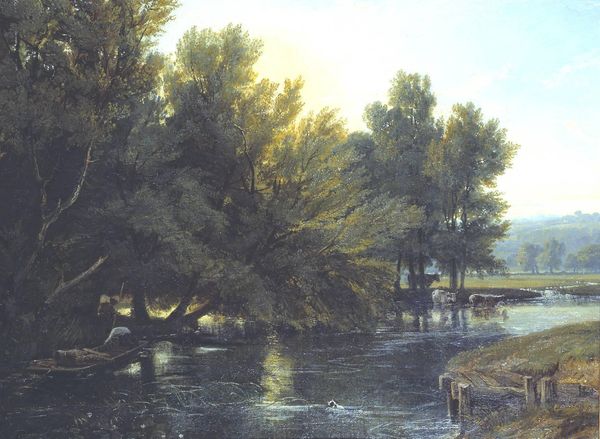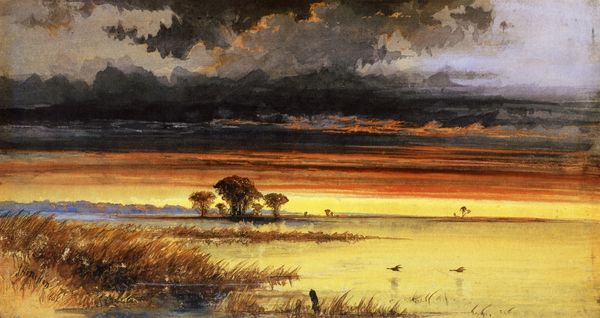
painting, plein-air, watercolor
#
tree
#
sky
#
painting
#
plein-air
#
landscape
#
impressionist landscape
#
figuration
#
oil painting
#
watercolor
#
nature
#
watercolor
#
realism
Copyright: Public domain
Curator: Albert Benois painted "Halt of Travelers at a Fire" in 1936. He used watercolors in a plein-air style to realize it. The scene feels simultaneously intimate and expansive. What strikes you initially? Editor: That wash of warm color. The monochromatic sky certainly dominates my perception. You sense both the beauty and the loneliness of this encounter, this group halting during their travel. It emphasizes the shared human experience of warmth and light amidst what might be interpreted as larger social turmoil. Curator: I'm drawn to the materiality of the scene itself. Look closely at how Benois used the watercolor. The way the pigment interacts with the paper to render the firelight feels intentional, even practical. It conveys information efficiently about light, reflection, and temperature and communicates information regarding available materials. Editor: I agree, but this approach minimizes the travelers' narrative, perhaps? Aren’t we, as viewers, prompted to think about migration, or displacement during that era? Doesn’t the artist invite consideration of the relationship between humanity and the elements at this specific time? Curator: Potentially. But if we over-emphasize the sociopolitical, we risk missing the nuanced commentary on craft and accessibility Benois delivers. Consider, for instance, his deliberate decision to use watercolors, which would have allowed him a portability that oil paints simply could not offer. What kind of labor did that demand? Who can transport themselves, their goods, their means to an end. Editor: Yes, but context matters. What sociopolitical factors dictated travel for particular peoples at that specific point in history? Why and how do figures appear marginalized from what some would define as a ‘natural’ habitat? The liminal state of this composition might well reflect the uncertainty faced by many persons on the margins of their own community or homeland. Curator: The composition itself directs my attention away from speculation towards grounded assessment of artistic craft: See how the arrangement guides your eye, connecting water, figures, the horses, trees... Editor: I concede your reading sheds light on less explored dynamics of landscape as an instrument. I am just inclined to wonder whether that very act of halting constitutes its own sort of material statement when contextualized. Curator: Precisely why art like this sparks necessary conversations, right? Editor: Indubitably! It presents not merely scenery but situations worthy of further observation.
Comments
No comments
Be the first to comment and join the conversation on the ultimate creative platform.
